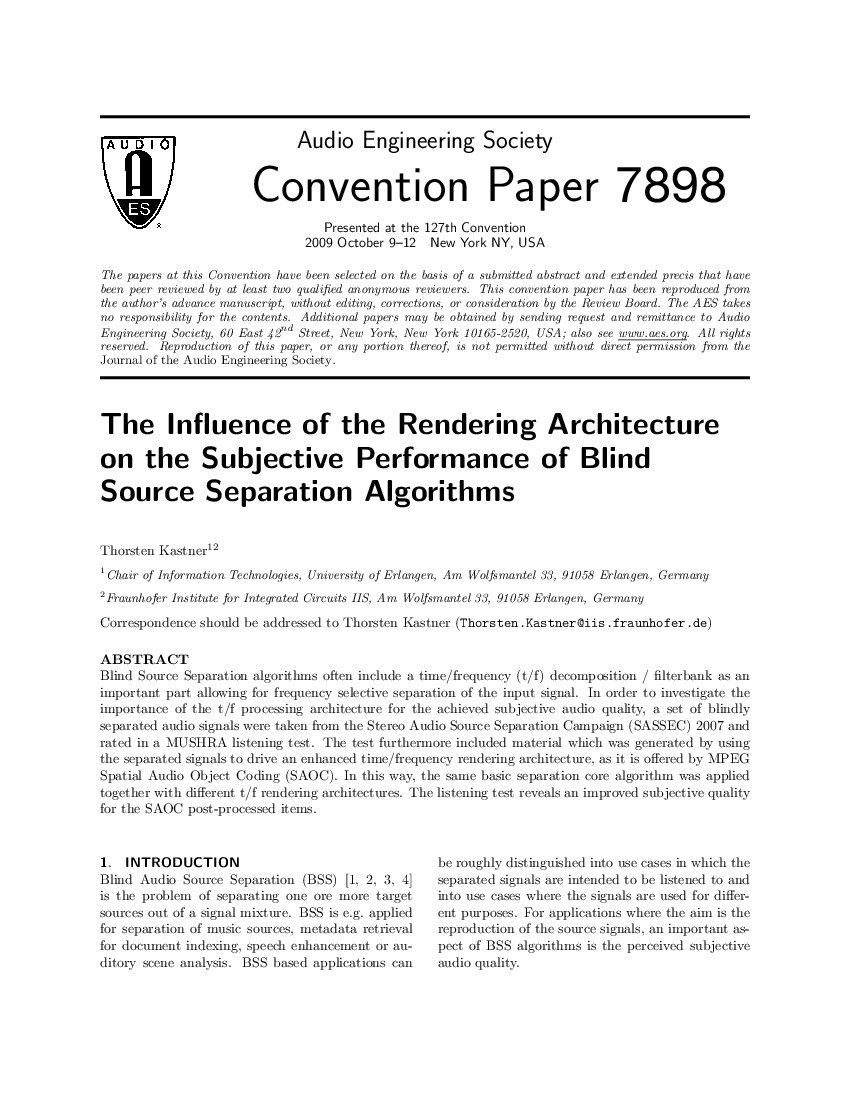Home / Publications / E-library page
You are currently logged in as an
Institutional Subscriber.
If you would like to logout,
please click on the button below.
Home / Publications / E-library page
Only AES members and Institutional Journal Subscribers can download
Blind Source Separation algorithms often include a time/frequency (t/f) decomposition / filterbank as an important part allowing for frequency selective separation of the input signal. In order to investigate the importance of the t/f processing architecture for the achieved subjective audio quality, a set of blindly separated audio signals were taken from the Stereo Audio Source Separation Campaign (SASSEC) 2007 and rated in a MUSHRA listening test. The test furthermore included material which was generated by using the separated signals to drive an enhanced time/frequency rendering architecture, as it is offered by MPEG Spatial Audio Object Coding (SAOC). In this way, the same basic separation core algorithm was applied together with different t/f rendering architectures. The listening test reveals an improved subjective quality for the SAOC post-processed items.
Author (s): Kastner, Thorsten
Affiliation:
University of Erlangen-Nuremberg, Erlangen, Germany; Fraunhofer IIS, Erlangen, Germany
(See document for exact affiliation information.)
AES Convention: 127
Paper Number:7898
Publication Date:
2009-10-06
Import into BibTeX
Session subject:
Sound in Real Spaces
Permalink: https://aes2.org/publications/elibrary-page/?id=15093
(4632KB)
Click to purchase paper as a non-member or login as an AES member. If your company or school subscribes to the E-Library then switch to the institutional version. If you are not an AES member Join the AES. If you need to check your member status, login to the Member Portal.

Kastner, Thorsten; 2009; The Influence of the Rendering Architecture on the Subjective Performance of Blind Source Separation Algorithms [PDF]; University of Erlangen-Nuremberg, Erlangen, Germany; Fraunhofer IIS, Erlangen, Germany; Paper 7898; Available from: https://aes2.org/publications/elibrary-page/?id=15093
Kastner, Thorsten; The Influence of the Rendering Architecture on the Subjective Performance of Blind Source Separation Algorithms [PDF]; University of Erlangen-Nuremberg, Erlangen, Germany; Fraunhofer IIS, Erlangen, Germany; Paper 7898; 2009 Available: https://aes2.org/publications/elibrary-page/?id=15093